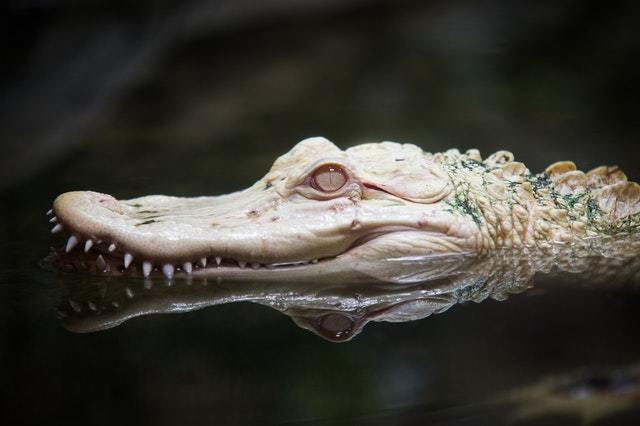Are Snails Arthropods? (Everything You Need To Know)
Snails are some of the most primitive creatures on earth and are believed to have lived for nearly 500 million years. Like slugs, they are cute but tend to eat plants a lot. As a result, most people like to treat them as pests, while some also see them as insects or arthropods. But is that really what they are? Are snails arthropods?
A snail is neither an arthropod nor an insect. Instead, it’s a gastropod. Gastropods are of the phylum Mollusca (or Mollusks) and include the group consisting of snails and slugs. A major characteristic of mollusks is the lack of bones and skeleton, but this doesn’t mean a snail is unprotected.
In this article, we will examine the taxonomy of snails and how they are different from arthropods or insects.

What Are Arthropods?
Animals like spiders, centipedes, prawns, and ants are known to populate homes and gardens. Each one of these is an arthropod.
Arthropods are well-known invertebrates, which means they lack a backbone. With over a million different species, they make up about two-thirds of all critters, which makes them the largest group. They play various roles in the ecosystem, functioning as scavengers, recyclers, pollinators, and food for other animals.
Arthropods are characterized by an exoskeleton, jointed legs or appendages, and a segmented body. In fact, the term “arthropod” is coined from Greek words meaning “jointed foot.”
There are four major groups of arthropods – arachnids (scorpions and spiders), myriapods (millipedes and centipedes), crustaceans (shrimp and crabs), and insects (bees and ants). Other examples include dragonflies, slaters, spiders, and so on.
Why Snail Is Not An Arthropod
The main characteristic of arthropods is their segmented bodies. Snails do not have segmented bodies; that is why they are not arthropods.
Instead, snails are gastropods, just like slugs, and have soft unsegmented bodies. For snails, the body is usually covered with a protective shell.
Both snails and slugs are considered invertebrates and belong to the Mollusca phylum or mollusks.
With over 110,000 known species, the phylum Mollusca is the second largest phyla. It includes both aquatic and terrestrial mollusks. Besides snails and slugs, other animals you will find in this category are clams, octopuses, and squids.
What is the Difference Between Mollusks and Arthropods?
While mollusks and arthropods are both invertebrates, they have a lot of differences. The major ones are discussed as follows:
Body
Molluscs are mainly characterized by a soft body that is normally covered in mucus and surrounded by a shell or two. Anthropoids, on the other hand, are simply invertebrates with an exoskeleton and a segmented body with a pair of appendages. It is worth mentioning that even though their body shape and structure are not the same, both organisms (mollusks and arthropods) show bilateral symmetry.
Phylum
Both organisms belong to different phylums. Arthropods belong to Phylum Arthropoda, which happens to be the largest phylum of the kingdom Animalis. Some organisms in this category are shrimps, mites, squids, lobsters, crabs, and insects generally. Mollusks, on the other hand, belong to the phylum Mollusca, which is the second-largest phylum. It includes animals like snails, squids, and clams.
Locomotion
Another difference between mollusks and arthropods can be seen in how they move. Arthropods, especially insects, typically have wings for flying, whereas mollusks have a different anatomical structure for movement. For instance, snails have a muscular foot which they use for locomotion, while squids use their tentacles.
Exoskeleton
As earlier indicated, arthropods have an exoskeleton made of chitin. This gives them the ability to moult (i.e., to shed previous exoskeleton and put on a new one). Mollusks, on the other hand, have mantles that secretes their shell.
Circulatory system
The majority of arthropods have a closed circulatory system, whereas molluscs have an open circulatory system which is responsible for pumping blood from the heart to other parts of the body.
Snails As Mollusk or Gastropod
Snails belong to the class Gastropoda, which is one of the three main classes of Phylum Mollusca. The other two classes are Cephalopoda (cuttlefish, octopuses, and squids) and Bivalvia (scallops and clams). Other animals in the same class as snails are conchs, nudibranchs, and slugs. While snails and conchs have shells, slugs and nudibranchs do not have a shell.
The shell of a snail is one of its fascinating physical features. It’s made of calcium carbonate and serves as a hard cover that offers protection to the snail’s body and foot. The shell is secreted by a thin outer layer known as the mantle (cavity). The mantle is also where respiration takes place.
Aquatic snails and others living in more humid areas have thin shells, while most terrestrial snails have thicker shells for moisture retention.
Depending on the species, gastropods can be herbivores, carnivores, or omnivores. Snails eat almost everything, so they fit into each of these categories. They also feed on plant and animal waste, so they are detritivores and decomposers.
Other Related Questions: Is A Snail An Arthropod?
Is a snail an insect?
No, a snail is not an insect. Even though insects and snails belong to the animal kingdom, they are not in the same phylum. Insects belong to the phylum Arthropoda, while snails are mollusks.
Is a snail a crustacean?
No, a snail is not a crustacean. Crustaceans are members of the phylum Arthropoda and mostly include aquatic animals like crayfish, shrimp, crabs, and lobsters. There are also land arthropods like wood lice.
Is snail a mammal?
Snails are not mammals; instead, they are invertebrates and do not have a backbone. Mammals are invertebrates and have a backbone.
Is a snail an amphibian?
Snails are not amphibians. Like mammals, amphibians are vertebrates.





